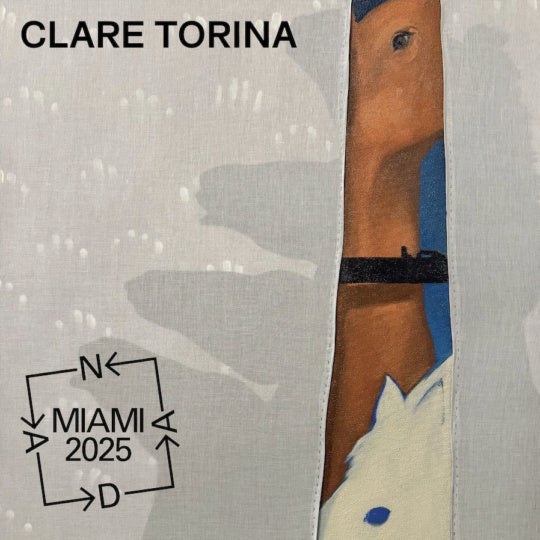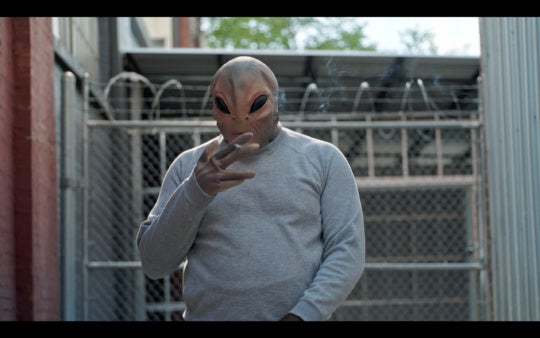
Eva Hesse began her career as a painter who was influenced by the Abstract Expressionists, but it wasn’t until she began making her startlingly original, three-dimensional assemblages that she gained critical attention. Made out of manmade and natural materials in a stripped-down style associated with the Post-Minimalist movement, Hesse’s work departed from that of fellow Minimalists and friends like Carl Andre, Mel Bochner and Sol LeWitt in that she often brought an unexpected warmth, eroticism and Dadalike humor to signature works like Ringaround Arosie (1965) and Expanded Expansion (1969). When she died from a brain tumor in 1970 at the age of 34, Hesse was not only one of the most prominent artists in a male dominated New York art scene but an internationally renowned figure.
Marcie Begleiter’s documentary Eva Hesse, which screens at the Atlanta Jewish Film Festival on February 10 and 12, is an enthralling and deeply affecting tribute that chronicles Hesse’s life in a brisk but richly detailed chronology beginning with her traumatic childhood in Nazi Germany and subsequent immigration to New York City in 1940. While Begleiter doesn’t depart from the traditional documentary format to offer a more unconventional approach for such an idiosyncratic figure, her authoritative shaping of the exhaustively researched materials is brilliant. She cherry-picks from the best available sources — archival photographs, home movies, journal entries from Hesse (read by actress Selma Blair), exhibition ephemera and vivid memories/soundbites from family, friends and colleagues —to present a layered and comprehensive portrait of Hesse.

And, of course, there are brief but tantalizing glimpses of such famous assemblages like Metronomic Irregularity II (1966), where squares of slate and twisted fibers create a unique tension within the designated spacing, and Accession II (1968), which melds galvanized steel and vinyl tubing into a provocative cube sculpture that is both seductive and intimidating.
Hesse’s affinity for creating art came at an early age and the viewer shares her sense of wonder and discovery as Begleiter takes us from her art school days at Cooper Union and Yale School of Art (where she studied with Josef Albers) through her marriage to sculptor Tom Doyle (1961-1965; they separated but never divorced) to her eventual abandonment of painting in favor of sculpture as a more effective medium for her provocative design ideas.

The documentary’s coverage of the early ’60s art scene in New York City is particularly evocative. For example, there is wonderful footage from a costume party at sculptor George Segal’s chicken ranch, where you can glimpse experimental dancer/choreographer Yvonne Rainer and other downtown scenemakers in celebratory mode. The film also demonstrates why the NYC creative community was fertile ground for young artists like Hesse. Richard Serra, one of many witnesses to those years, states, “At that time there wasn’t any art world. There were people making work for themselves and others. Commodification hadn’t happened. The art world hadn’t been taken over by collectors.”

We see that Hesse’s personal life had its ups and downs (including periodic bouts of depression), but creating art was the one constant in her life and sustained her to the end. The restless energy and long hours she would devote to the process of making art — as if she knew her time was limited — explains why she was so prolific. When the Guggenheim Museum hosted a memorial retrospective of Hesse’s art in 1972, it was a compilation of five years of work and filled up all five levels of the exhibition space. “I don’t think all of us realized how good that work was,” artist Robert Mangold states in the documentary. “I had a show at the Guggenheim that was approximately five years’ work and it was one ring around the museum. When you see the volume of what Eva was able to accomplish in that time, it makes you realize what you’re able to do in five years.”

A real turning point in Hesse’s evolution as an artist (documented in Begleiter’s movie) occurred in 1966 at the gallery exhibition “Abstract Inflationism and Stuffed Expressionism,” where Hesse premiered Hang Up, a work that was not exactly a painting or a sculpture but a strange commingling of the two. A long, curving metal rod that is connected to a large cloth-wrapped frame extends beyond the four-sided border into gallery space and back again. Hang Up both contemplates the concept of the painting frame and challenges one’s perceptions on what a painting or sculpture should be. In her journal, Hesse wrote, “Hang Up is the most important early statement I made. It was the first time that my idea of absurdity as extreme feeling came through.”
One of the most exhilarating sections of Eva Hesse traces the artist’s exploration of fiberglass with Doug Johns, co-founder of Aegis Reinforced Plastics. After some trial and error, Hesse created a number of irregular bucketlike forms out of papier-mâché and had them coated with fiberglass and polyester resin. The result is Repetition Nineteen III (1968), in which the translucent objects have a tactile organic quality but also an otherworldly beauty.

Creating permanent works of art was not really a major consideration for Hesse and she was well aware that materials like rubber and plastic would crack and break down over time. Johns recalls Hesse saying in reference to her museum-acquired pieces, “Let them worry about it [the preservation]. I want what the effect is now.” In her view, according to Johns, “The art was in the making. The artifact was what was left over.”
True enough, some of Hesse’s work is in danger of disintegrating and being lost to time, but it is wonderful to have Marcie Begleiter’s documentary as a permanent audiovisual record of the artist’s life and achievements. One can only wonder at what Hesse might have accomplished had she not been struck down at such a young age.
“Eva Hesse,” a film by Marcie Begleiter, is distributed by Zeitgeist Films and has screened at numerous art institutions, universities, and film festivals since its world premiere at the Whitney Museum of America Art in 2015. It screens on Feb. 10 at Regal Atlantic Station at 2:30pm, and on Feb. 12 at Lefont Sandy Springs at 11:30am, with a Q&A following each screening. Click here for more information on the Atlanta Jewish Film Festival, which runs January 24-February 15.




